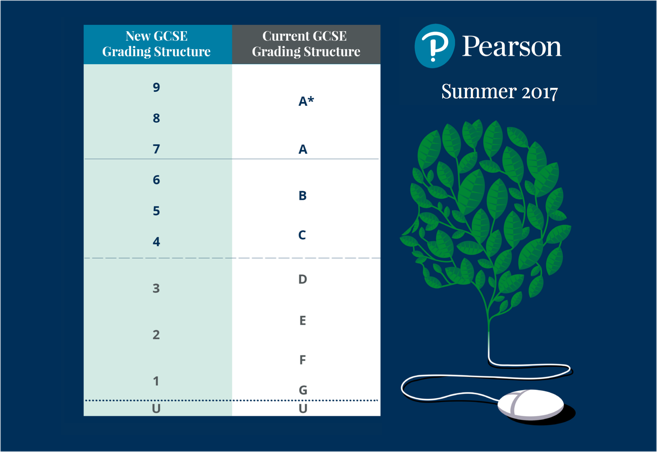Why Switch to Pearson?
Get an overview of the new 9–1 awarding from 2017 for GCSE qualifications and find out how grade boundaries are set.
Download our Grading from 2017 PDF to find out more about awarding and grade boundaries.
GCSE 9-1 grades explained

What is the new grading scale for GCSE qualifications?
The reformed GCSE qualifications will be awarded on a grade scale of 9 (the highest grade) to 1 (the lowest).
This new scale will be aligned to key grades on the current A* to G scale.
- broadly the same proportion of students will achieve a grade 4 and above as currently achieve a grade C and above
- broadly the same proportion of students will achieve a grade 7 and above as currently achieve a grade A and above
- broadly the same proportion of students will achieve a grade 1 and above as currently achieve a grade G and above.

All other grade boundaries (except Grade 9) will be set arithmetically, as they are now.
For example, the boundaries at grades 5 and 6 will be set based on the difference in marks between grades 4 and 7; grade 5 will be set at one third of the difference in marks, and grade 6 at two thirds the difference in marks. Find out more about the grade scale.
